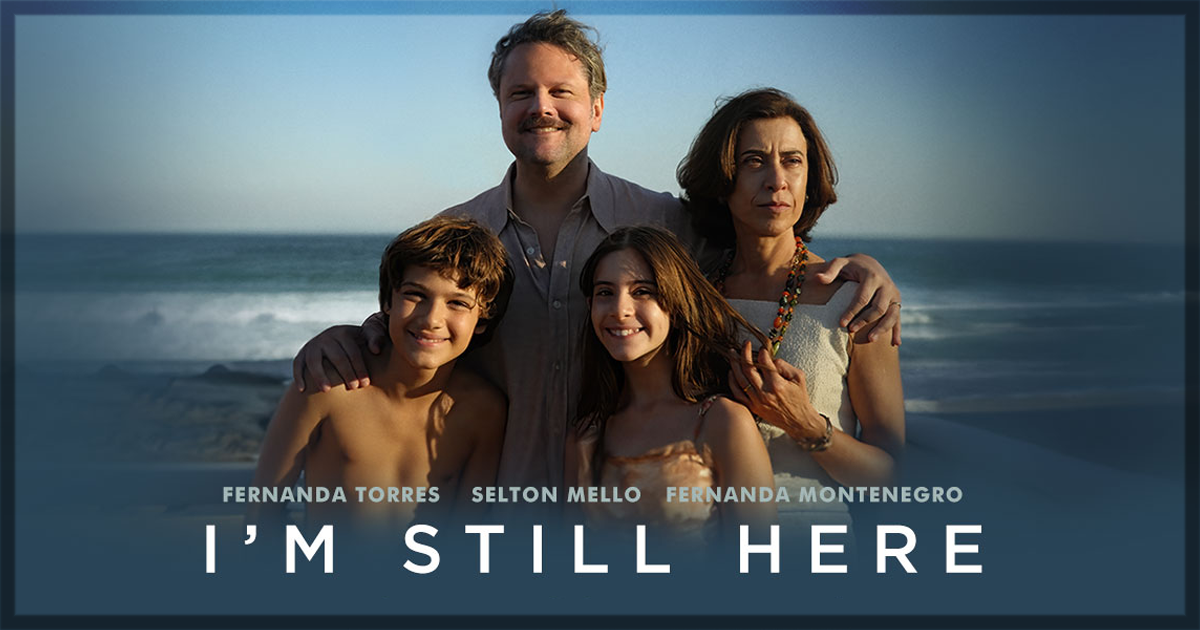Brazilian cinema has always been known for exploring the country’s turbulent history and coming forward with hard-hitting stories. Be it the City of God or Four Days in September, cinema has been one of the most powerful mediums for shedding light on Brazil’s socio-political struggles, unearthing raw, unfiltered narratives that resonate far beyond its borders. However, one of the greatest strengths of Brazilian cinema is its ability to intertwine personal stories with the broader struggles faced by the country, and I’m Still Here stands as a shining example of how storytelling can blend personal anguish with political turmoil. It’s not like viewers haven’t seen an intense story before that gives audiences an idea about what certain people endured in their lives and how they became icons in their own countries. However, there are only a handful of instances where filmmakers went one step ahead to focus on what their families endured and how their lives changed during that period. In the first look, Walter Salles’ I’m Still Here is about former politician Rubens Paiva (played by Selton Mello) and his disappearance during the military dictatorship. However, Salles takes a different route to tell this story and primarily focuses on the politician’s family, especially his wife, Eunice Paiva (played by Fernanda Torres)—which makes the movie even more compelling and impactful than before.
Set in the 1970s, I’m Still Here begins with former Congressman Rubens Paiva returning to Rio de Janeiro, following the revocation of his tenure at the start of the 1964 Brazilian coup d’état. After returning home, Paiva tries returning to normalcy by living a typical life with his wife and children. However, everything changes when a raid on his house leads to Paiva being taken into custody in January 1971, ultimately resulting in his disappearance. After his disappearance, Paiva’s wife, Eunice, continues to ask about her husband’s whereabouts, and when she presses the authorities to tell her about her husband, the government arrests her and tortures her for 12 days. But it’s not just her who faces the wrath of the dictatorships, their teenage daughter, Eliana (played by Luiza Kosovski), also gets imprisoned but is released after 24 hours. As soon as the narrative shifts focus to Eunice, her relentless search for the truth about her husband’s fate transforms her into an unlikely heroine. The film does not shy away from portraying the brutality of the regime but instead uses it to underscore the unbreakable will of those who resisted.
Only a few films have the power to blend history, politics, and personal storytelling as seamlessly as I’m Still Here. From the very first 15 minutes of the movie, viewers realize that it is not just a film; it is an experience—one that lingers long after the credits roll. While the movie is deeply rooted in Brazilian history, its themes of political violence, state oppression, and personal resilience resonate globally. Whether it’s Argentina’s Dirty War, Chile under Pinochet, or even the political struggles faced by several countries in the contemporary world, the movie serves as a reminder of the cost of the dictatorship and the importance of justice.
Another aspect that makes the movie such a riveting success is its breathtaking cinematography. Visually, this film is a masterpiece. The cinematography by Adrian Teijido, who has previously helmed the cinematography of the Netflix series The Crown, is one of the main reasons why this film feels so relatable. He beautifully captures the contrasting worlds of Paiva’s family life and the oppressive darkness of Brazil’s dictatorship. The sequences set in their Leblon beachside home are filled with warmth, a stark contrast to the cold, lifeless torture chambers where Eunice is interrogated. Scenes inside those sterile torture chambers are shot magnificently, and it gives audiences an idea about how politics has the power to change people’s lives. In this case, it made Eunice’s life worse, and the film provided a detailed look at how political oppression is not constrained to being a national issue but a deeply personal one. On the other hand, the haunting score by Warren Ellis is another standout element that enhances the overall viewing experience. A perfect mix of melancholic strings and subdued piano, the music underscores the emotional gravity of each scene, ensuring that the audience feels every moment of loss, fear, and hope.
As far as acting is concerned, all the praises that you must have heard about Fernanda Torres are true. It’s been a while since we have seen such a haunting performance by an actor that sends shivers down our bodies. Torres embodies a woman who transitions from a devoted wife to a relentless fighter and then to an aging matriarch grappling with memory loss. Her performance in the scenes where her character gets tortured by the system just wants you to grab her and protect her from everything. She captures every facet of Eunice’s pain, fear, and resilience with heartbreaking authenticity. Her ability to convey emotion through the smallest expressions—whether it’s a trembling hand, a distant gaze, or a moment of silent despair—elevates I’m Still Here to the level of cinematic greatness.
Rodrigo Santoro, known for his work in Westworld and Love Actually, is equally compelling as Rubens Paiva. His performance exudes both warmth and quiet strength, making his sudden disappearance all the more gut-wrenching. The chemistry between Santoro and Torres is palpable, making their on-screen relationship feel authentic and deeply moving. Meanwhile, Luiza Kosovski’s performance as Eliana is truly amazing. It was such a challenging role, but she did a brilliant job of conveying the emotions that the role needed to show.
With a poignant narrative, deeply emotional performances, and historical significance, I’m Still Here is an essential watch for anyone interested in powerful cinema, and I am glad that the Academy recognized the movie’s impact. It is a breathtaking and intense journey through one of Brazil’s darkest chapters, anchored by one of the finest performances of the last 10 years by Fernanda Torres. Whether you are a history enthusiast, a lover of compelling dramas, or someone looking for a great watch, this film is not to be missed. This is a must-see masterpiece!
I’m Still Here is now available on digital and on demand.
Learn more about the film, including how to watch, at the official website.
You might also like…
‘Parthenope’ Movie Review: A Glorified Perfume Ad


